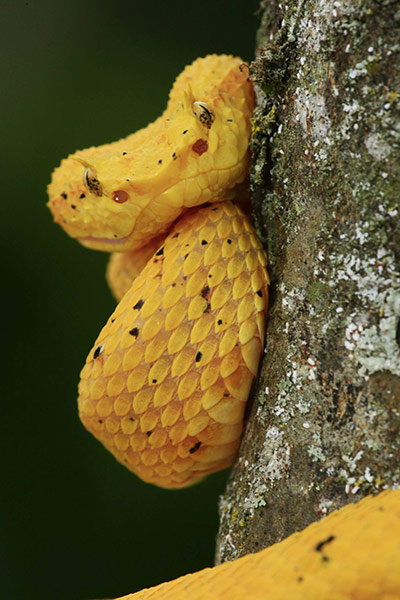TOP STORIES
More bird flu feared in Miyazaki
... In Tottori Prefecture, meanwhile, officials said the highly virulent strain of the H5N1 virus was detected in two wild birds that tested positive for avian flu in earlier tests.
The infection, involving a tufted duck and hooded gull found in a weakened state in Yonago last month, marks the second outbreak of a highly virulent strain of bird flu in Tottori this winter.
No signs of infection have been confirmed so far among the 924,000 chickens at 18 poultry farms within 10 km of where the two wild birds were found, the prefectural government said.
The Hokkaido government said detailed tests on a dead whooper swan recovered in the town of Hamanaka in mid-January were positive for the H5N1 virus, the sixth case of a wild bird infected with bird flu in Hokkaido.
Japan Times - japantimes.co.jp (source: ProMed Mail
02 Feb 2011
Location: Tottori Prefecture, Japan - Map It

Wildlife Experts Joining Calls Of Alarm Over White-Nose Syndrome In Bat
...On Wednesday a group of wildlife experts ranging from professors at the University of California Davis to state and national wildlife agencies voiced their concern over the spread of white-nose syndrome.
... Dr. Foley and her co-authors' call to action came in conjunction with an article that appeared in the Conservation Biology. The article was developed after the authors attended a white-nose syndrome workshop in Colorado in August that was funded by the National Park Service.
... The authors' recommendations include: an outbreak investigation network that would establish a standard diagnosis and case definitions; bat population monitoring; and improved public awareness of the problem.
"Scientists, policymakers and members of the public will all have a voice in the coming debate over the best course of action," Dr. Foley said. They also call for further studies of chemical and biological agents known to kill the fungus but not yet proven safe for bats, as well as study of treatments for similar diseases.
National Parks Traveler - www.nationalparkstraveler.com
04 Feb 2011
K Repanshek
Cited Journal
J Foley et al. Investigating and Managing the Rapid Emergence of White-Nose Syndrome, a Novel, Fatal, Infectious Disease of Hibernating Bats. Conservation Biology. 2011; DOI:10.1111/j.1523-1739.2010.01638.x
More WNS News
>>>> Theory about mammals and fungus explains bat plague
More WNS News
>>>> Theory about mammals and fungus explains bat plague
>>> Death in the Bat Caves: Disease Wiping out Hibernating Bats [similar to main story]
The health of wildlife, domestic species and human beings, and the environments that support them (One Health), have been a focus of the Wildlife Disease Association for more than 50 years. The upcoming January issue 47(1) has several articles with significant ecological and conservation implications of which the Wildlife Disease Association would like to make you aware.
Effective measures for controlling chronic wasting disease (CWD) of cervids, remain elusive. Margaret Wild and a team from Colorado looked at The role of predation in disease control: A comparison of selective and non-selective removal on prion disease dynamics in deer, specifically the random removal through harvest or culling and selective predation by wolves (Canis lupus) on CWD in deer (Odocoileus spp.) populations. The impacts of selective predation on epidemic dynamics were sensitive to assumptions of the model on parameter estimates; however, within expected ranges, the results of selective predation were consistent and robust. The authors suggest that as CWD distribution and wolf range overlap in the future, wolf predation may suppress disease emergence or limit prevalence.
Wildlife Disease Association - www.wda.org
31 Jan 2011
Wildlife Health Bulletin - Revised Case Definitions for White-Nose Syndrome and Winter 2010/2011 Bat Submission Guidelines
This bulletin provides information about revised case definitions for classifying white-nose syndrome (WNS) in bats. These case definitions were developed in conjunction with laboratory representatives from the WNS National Plan Diagnostic Working Group and standardize the interpretation of laboratory test results. This standardization will assist with WNS-related communications and management actions.
USGS National Wildlife Health Center - www.nwhc.usgs.gov
01 Feb 2011
J Sleeman
OTHER WILDLIFE HEALTH RELATED NEWS
Photo courtesy of The Guardian- Week in wildlife- Deer prions could jump, study says
- Birds found dead, officials do not suspect ‘fowl’ play [update]
- Whale dies near beach: Officials tow North Atlantic right whale onto shore to conduct necropsy [Location: Butler Beach, Florida, USA - Map It
 ]
] - Harsh winter taking toll on Minnesota wildlife
- Scientists probe big fish die-off [Detroit River, Michigan, USA - Map It
 and Detroit River, Ontario, Canada - Map It
and Detroit River, Ontario, Canada - Map It  ]
] - Major Study Will Look At Effects of Disease in Rapidly Declining Texas Bobwhite Quail Populations
- Sea otters absent from local waters
- Cholera killing thousands of ducks in the Arctic: Carleton University, Environment Canada to study disease [ Canada - Map It
 ]
]





